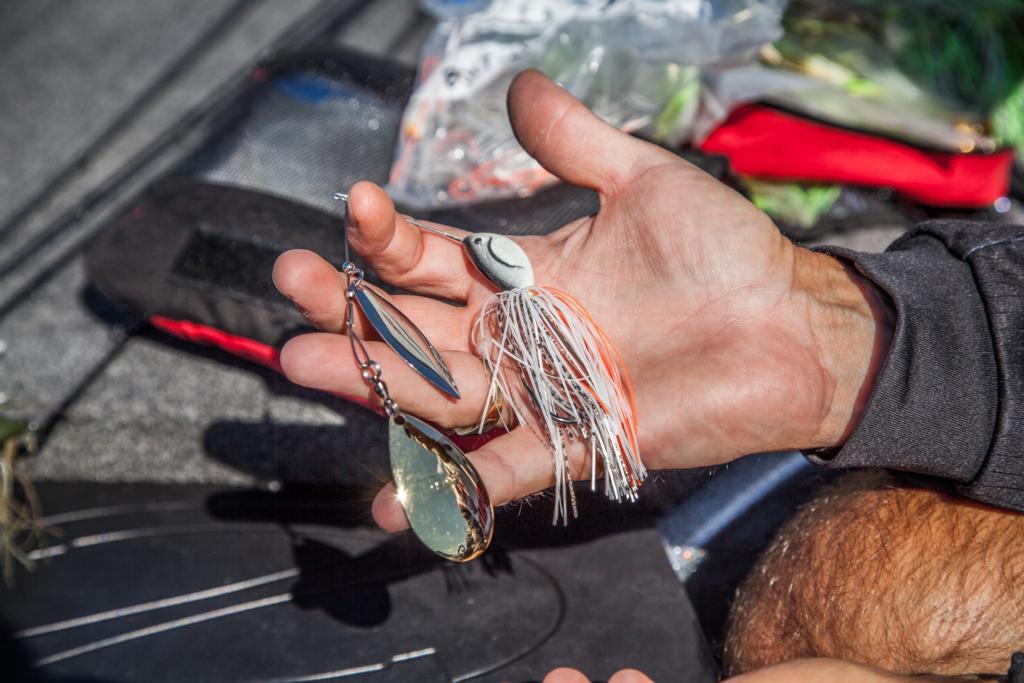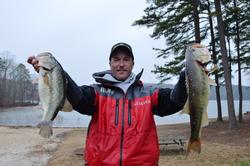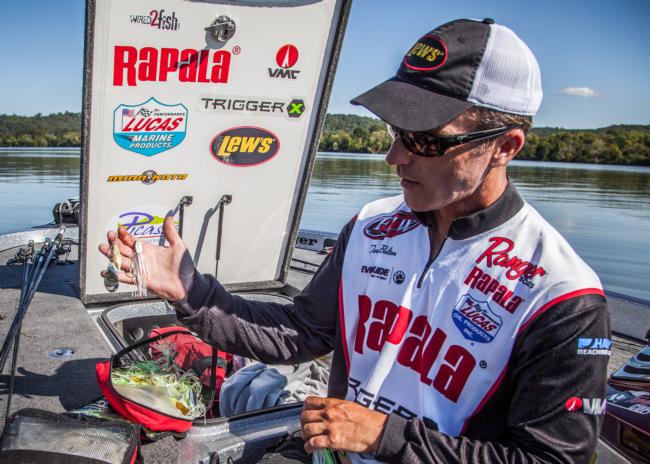Slow-Rolling Spinnerbaits in Cold Water

Crankbaits, jerkbaits and lipless crankbaits are popular search baits in the prespawn, but to me it’s hard to beat a spinnerbait. You might not get the same numbers of fish as the other baits will, but as a general rule you’ll get bigger fish. Mostly I fish the Tennessee River lakes, especially Kentucky Lake, and I think spinnerbaits do a good job of imitating the gizzard shad that bass in these impoundments really go for this time of year. The shad will congregate along riprap banks and around bridge pilings and feed on the algae. Also, gizzard shad will start dying off between now and March, and bass will key on that.
The kind of areas I look for are 45-degree banks, channel-swing banks, riprapped banks – anything where fish can come up shallow and feed, yet where there’s deeper water close by that they can slide back to when a cold front comes along. Basically, my boat is going to be sitting over 10 to 20 feet of water, and I’ll be making moderately long casts toward the bank. I slow-roll the spinnerbait so that it stays just above the bottom or makes occasional contact with it.
I use several different spinnerbaits – War Eagle and Stanley, among others. I’m pretty basic about the colors. Most of the time I fish a white/chartreuse or a white skirt. Likewise, about 98 percent of the time I’ll fish silver-gold combinations of Colorado or Indiana and willow-leaf blades, in 1/2- or 3/4-ounce weights. The depth of water I’m fishing dictates the weight, and the fish tell me by their response what kind of blades they favor, though in cold water, more “thump” is usually better.
I’ll vary the blade size proportionate to the size of the head I’m using. For instance, with a 1/2-ounce bait it might be a No. 5 willow-leaf with a No. 4 or 5 Indiana, and bigger blades on the 3/4-ounce bait. Sometimes I use a trailer, especially if the water temperature is 55 or below. A plastic trailer sort of gives the spinnerbait lift and lets you fish it even slower. My favorite trailers are a Zoom Twin Tail or a Mag II, which I bite off to about 4 inches. Here again, there’s nothing special about the color; I just want to add some size and motion to the spinnerbait.
The reel you use to slow-roll a spinnerbait along the bottom in prespawn makes a big difference. I like the Lew’s BB1 baitcaster with a 5.1:1 gear ratio for this presentation. I pair it with a Lew’s Custom Speed Stick Series 6-foot, 10-inch, medium-heavy spinnerbait rod, but anything from 6-foot, 6-inch to 7-foot will get the job done. Just make sure it has a flexible tip and enough backbone down the blank to set the hook in deep water.
The size of your line helps regulate depth and your ability to keep the blades turning slowly as the spinnerbait creeps along at the bottom. I use 14- or 17-pound-test Sufix fluorocarbon. If I’m fishing a lot of wood, I like the heavier line. Otherwise, I’ll stay with 14, especially when I want to get a little deeper.
Cast, let the spinnerbait sink to the bottom and then start reeling it in so it goes along that 45-degree bottom with the blades just barely turning. If the bottom is fairly flat, you can retrieve it a little faster. Either way, in the prespawn you’ll get your arms jarred by big bass when you’re slow-rolling a spinnerbait.

